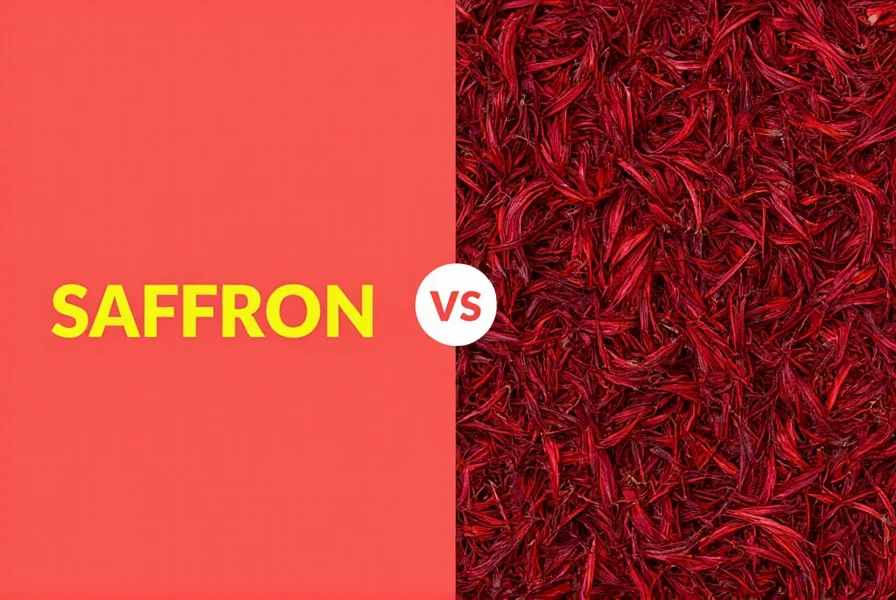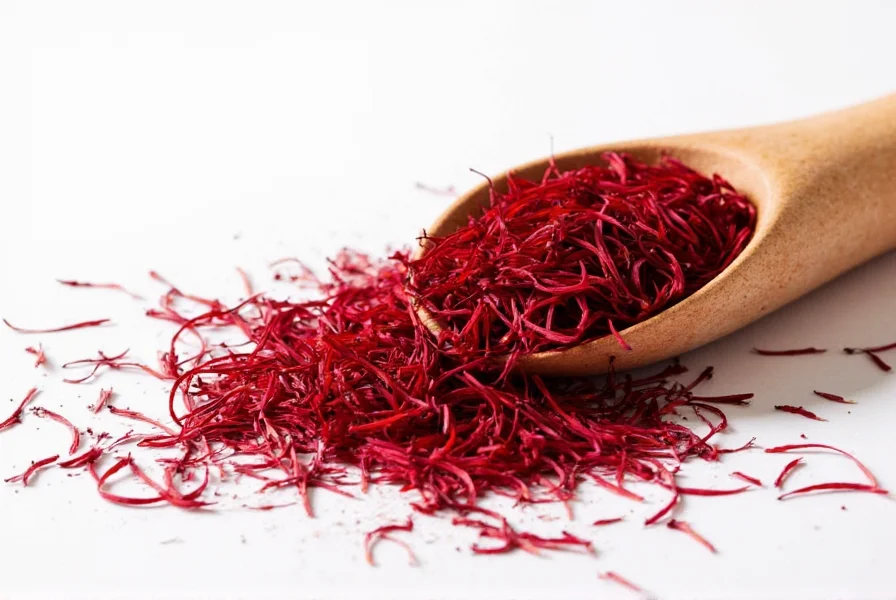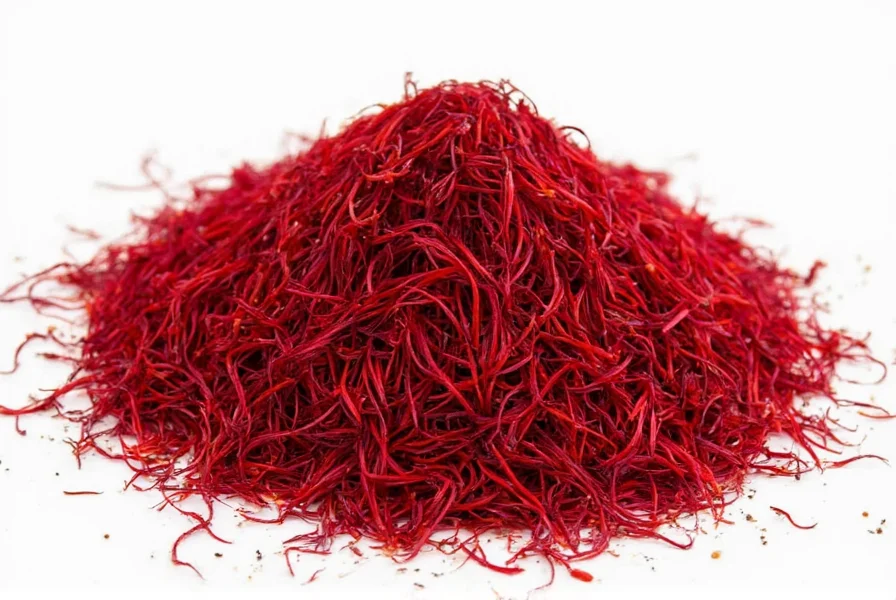Saffron, often misspelled as "saffrom," represents one of history's most prized culinary ingredients. This precious spice comes from the Crocus sativus flower, specifically from the delicate red stigmas that must be hand-harvested at dawn when the blooms first open. Each flower produces just three stigmas, requiring approximately 75,000 flowers to yield a single pound of saffron, which explains its extraordinary value.
The Science Behind Saffron's Value
The labor-intensive harvesting process directly contributes to saffron's premium price point. Farmers must collect the flowers by hand early each morning, then carefully separate the three crimson stigmas from each bloom. These delicate threads then undergo meticulous drying to preserve their chemical compounds, particularly crocin (responsible for saffron's golden hue), picrocrocin (providing its distinctive flavor), and safranal (delivering its characteristic aroma).
| Compound | Function | Concentration in Premium Saffron |
|---|---|---|
| Crocin | Colorant (yellow-orange pigment) | 8-12% |
| Picrocrocin | Bitter flavor compound | 3-6% |
| Safranal | Aroma compound | 0.5-1.5% |
| Moisture content | Preservation factor | Less than 12% |
Identifying Authentic Saffron
Consumers seeking genuine saffron should look for these characteristics:
- Appearance: Deep red threads with slight orange tips, never uniformly red
- Aroma: Distinctive hay-like fragrance with subtle metallic notes
- Solubility test: When placed in warm water, authentic saffron gradually releases golden-yellow color (not immediate red)
- Texture: Brittle threads that crumble easily between fingers
Be wary of "saffron" that's suspiciously inexpensive, as this typically indicates adulteration with safflower, marigold, or synthetic dyes. The ISO 3632 standard provides official grading for saffron quality based on crocin, picrocrocin, and safranal content.

Culinary Applications and Measurement
Professional chefs emphasize that less is more with saffron. A proper dosage ranges from 0.01 to 0.03 grams per serving (about 15-20 threads for four servings). For optimal flavor extraction:
- Crumble threads gently between fingers
- Soak in 2-3 tablespoons of warm liquid (water, broth, or milk) for 15-30 minutes
- Add both threads and soaking liquid to your dish
This technique maximizes the release of saffron's flavor compounds. Popular applications include Spanish paella, Italian risotto alla Milanese, Persian tahdig, and Scandinavian saffron buns. When substituting for the misspelled "saffrom" in recipes, always use genuine saffron measured precisely to avoid overpowering dishes.
Evidence-Based Health Considerations
Research suggests saffron contains compounds with potential health benefits, though these should not be overstated. Clinical studies have examined saffron's effects on:
- Mood regulation (particularly mild depression)
- Eye health (age-related macular degeneration)
- Appetite control
A 2022 meta-analysis published in Nutrients indicated that saffron supplementation (30mg daily) showed statistically significant improvements in mood scores compared to placebo. However, culinary use provides much smaller quantities than studied therapeutic doses. Always consult healthcare providers before using saffron for health purposes rather than culinary applications.

Storage and Preservation Techniques
To maintain saffron's potency for up to two years:
- Store in an airtight container away from light
- Maintain consistent cool temperature (below 20°C/68°F)
- Keep away from moisture and strong odors
- Consider dividing large purchases into smaller portions to minimize air exposure
Freezing saffron is generally not recommended as temperature fluctuations can degrade quality. Properly stored saffron should retain its characteristic aroma and coloring power. Discard if threads become brittle beyond normal or lose their distinctive fragrance.
Common Misconceptions Clarified
Several myths persist about saffron that deserve clarification:
- "Saffron causes hallucinations": No scientific evidence supports this at culinary doses
- "All red threads are saffron": Many cheaper substitutes mimic appearance but lack authentic compounds
- "More saffron equals better flavor": Excessive amounts create bitter, medicinal taste
- "Saffron is only for savory dishes": Traditional uses span both sweet and savory applications globally
Conclusion
Understanding the difference between the misspelled "saffrom" and authentic saffron empowers consumers to make informed choices about this extraordinary spice. By recognizing quality indicators, proper usage techniques, and realistic expectations, culinary enthusiasts can appreciate saffron's unique contribution to global cuisine without falling prey to common misconceptions or adulterated products. The investment in genuine saffron pays dividends in both flavor complexity and cultural connection to centuries of culinary tradition.
Frequently Asked Questions
What's the difference between saffron and the misspelled term 'saffrom'?
"Saffrom" is a common misspelling of saffron. The correct term is saffron, which refers to the dried stigmas of the Crocus sativus flower. No spice called "saffrom" exists - it's always a spelling error for saffron.
Why is saffron so expensive compared to other spices?
Saffron's high cost stems from its labor-intensive harvesting process. Each Crocus sativus flower produces only three stigmas, which must be hand-picked at dawn. It takes approximately 75,000 flowers to yield one pound of saffron, requiring significant manual labor in a narrow harvesting window.
How can I verify if my saffron is genuine and not adulterated?
Test saffron authenticity by placing a few threads in warm water. Genuine saffron gradually releases a golden-yellow color over 15-20 minutes while maintaining red threads. Immediate red coloring indicates artificial dyes. Also check for proper aroma (hay-like with metallic notes) and avoid uniformly red threads, which suggest coloring.
What's the proper way to measure saffron for cooking?
The ideal culinary dosage is 0.01-0.03 grams per serving (approximately 15-20 threads for four servings). For best results, crumble threads and soak in 2-3 tablespoons of warm liquid for 15-30 minutes before adding to your dish. Never exceed 0.05 grams per serving as this creates bitter flavors.











 浙公网安备
33010002000092号
浙公网安备
33010002000092号 浙B2-20120091-4
浙B2-20120091-4